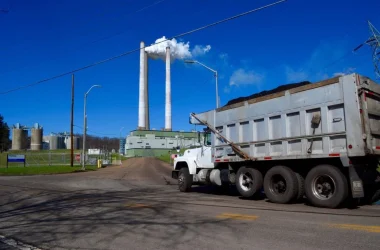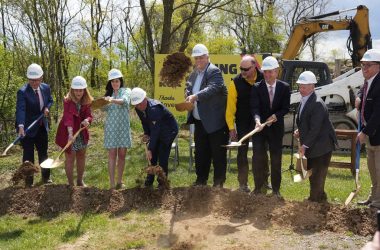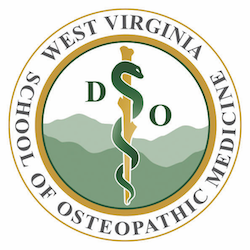By BISHOP NASH
The Herald-Dispatch
HUNTINGTON, W.Va — In the more than 4,000 overdose calls in Cabell County since 2014, a first responder’s job nearly always ended when the naloxone injection stopped.
While the patient awoke and the task at hand was completed, it created a jading, monotonous step through the same hopeless motions for both parties. The victims were left to their own devices – the same that had brought them to that point. The paramedics were left wondering if they would be back at the same address tomorrow, if not later that night.
There would never be enough naloxone to break the cycle as it stood, said Gordon Merry, Cabell County EMS director – merely responding, reviving, returning and repeating would not be enough to close the gap between the immediate saving of a person’s life and that individual seeking long-term treatment.
These teams assess each individual’s needs and develop a personalized plan for intervention, referring them to the region’s numerous addiction service providers often out of sight or mind for many struggling with addiction.
“We needed to be proactive and find something to prevent the second overdose and to get them to the resources that were there but (overdose victims) didn’t know about them,” said Connie Priddy, QRT coordinator with Cabell County EMS.
The three-person teams work a full work week, often more, each staffed by medical personnel from Cabell County EMS, a Huntington police officer, and a representative from either the Prestera Center, Recovery Point or the Huntington Comprehensive Treatment Center.
After clearing each overdose call, Cabell County EMS refers the patient to the QRT, which personally arrives to their address, or the address of the overdose, within three days – offering treatment options, informational material and contact information.
Now in its third week of operation, the early signs of success are there, Priddy said. Since Dec. 4, the QRT has contacted more than 50 people – four of which have entered treatment. The home visits have also revealed an encouraging side effect as the teams come upon others in the same residence, many with their own addiction problems, who they can reach in addition to their intended client.
As more seek recovery, the phenomena may continue to spread beyond what simply the QRT itself can provide, said Bob Hansen, director of addiction services at Marshall Health.
“I think over time there’s going to be a snowball effect of more and more people getting the help that they need, and we’re going to have to expand our services,” said Hansen, who was instrumental in organizing the multiple agencies toward the single-minded QRT program. “I think more people will be in recovery, and my hope is that each year the overdose rates will slow down or even reduce. I’m going to be excited.”
The teams have been mostly well-received by the overdose patients they visit, said Larrecsa Cox, a QRT member with Cabell County EMS along as part of its medical component. Of the 95 percent who welcome their visit, she guessed, around half actually allow the team into their homes and show a sincere interest in seeking treatment.
“They’re shocked that there is a group of people running around Huntington looking for them,” Cox said. “A lot of them and their family members are thankful.”
As was the case prior to the QRTs, Cox said first responders are prepared to make multiple visits to the same addresses if necessary – the nature of the beast, she called it. One transient individual in particular has already been the subject of five unsuccessful visits to track her down, she added.
“Some people are going to be critical over this, and my answer is that we’re doing something positive about this,” Merry said. “I think we’ll be successful with this. I really do.”
While QRTs may someday expand into the rest of Cabell County, Merry said teams currently stay within Huntington city limits – where an estimated 80 percent of the county’s overdose calls occur.
The local QRT program is modeled after existing teams operating in the Cincinnati area, which faces similar issues in combating opioid addiction. The local program is funded through three years by two federal grants totaling $1.35 million through the Department of Health and Human Services and the Department of Justice.
Referrals for a QRT visit can be made by calling 304-526-8541.
Follow reporter Bishop Nash on Twitter @BishopNash.
See more from The Herald-Dispatch





